Come check out some of the new titles that have arrived at the OISE Library! Featured in this New Titles post are books on the topics of education leadership, mental health, school diversity and educational activism. All of these titles are located near the service desk on the main floor of the library.
 The Intelligent, Responsive Leader, by Steven Katz, Lisa Ain Dack, and John Malloy. This book discusses how one can learn to lead in an “intelligent, responsive school” by taking the steps to develop an “intelligent, responsive leadership” practice. The purpose of the book is to empower school leaders, like principals, to lead out of the middle space created between the oppositional forces of the top-down school district expectations for professional learning and the bottom-up teacher experience-driven expectations for professional learning. Steven Katz is an OISE faculty member in the Applied Psychology and Human Development department and is the author of several best-selling books. Lisa Ain Dack is an instructor in the Master of Teaching and Master of Child Study and Education programs at OISE and is the co-author of the best-selling book Intentional Interruption. John Malloy is the director of education at the Toronto District School Board and has put many of the principles described in this book to practice throughout his career as an education leader. Together these authors provide readers with the strategies and tools necessary to develop “intelligent, responsive” leaders and schools by discussing real school-based stories and using scholarly literature on the topic.
The Intelligent, Responsive Leader, by Steven Katz, Lisa Ain Dack, and John Malloy. This book discusses how one can learn to lead in an “intelligent, responsive school” by taking the steps to develop an “intelligent, responsive leadership” practice. The purpose of the book is to empower school leaders, like principals, to lead out of the middle space created between the oppositional forces of the top-down school district expectations for professional learning and the bottom-up teacher experience-driven expectations for professional learning. Steven Katz is an OISE faculty member in the Applied Psychology and Human Development department and is the author of several best-selling books. Lisa Ain Dack is an instructor in the Master of Teaching and Master of Child Study and Education programs at OISE and is the co-author of the best-selling book Intentional Interruption. John Malloy is the director of education at the Toronto District School Board and has put many of the principles described in this book to practice throughout his career as an education leader. Together these authors provide readers with the strategies and tools necessary to develop “intelligent, responsive” leaders and schools by discussing real school-based stories and using scholarly literature on the topic.
 Schooltalk: Rethinking What We Say About – and to – Students Every Day, by Mica Pollock. This book provides teachers with strategies to promote equity in their classrooms through effective communication. The chapters of the book emphasize that the way teachers interact with students can affect their lives and have long-term consequences. The author, therefore, provides tips and strategies for implementing equity “schooltalk” in a variety of school-based scenarios. Furthermore, each chapter includes think/discussion questions and “action assignments” for teachers to engage with the material outlined in the book. Mica Pollock is the director of the Center for Research on Education Equity, Assessment, and Teaching Excellence at the University of California and is the editor of another book called Everyday Antiracism. Overall, Pollack provides effective tips for teachers by using scholarly literature on equity-based education and her own personal experiences.
Schooltalk: Rethinking What We Say About – and to – Students Every Day, by Mica Pollock. This book provides teachers with strategies to promote equity in their classrooms through effective communication. The chapters of the book emphasize that the way teachers interact with students can affect their lives and have long-term consequences. The author, therefore, provides tips and strategies for implementing equity “schooltalk” in a variety of school-based scenarios. Furthermore, each chapter includes think/discussion questions and “action assignments” for teachers to engage with the material outlined in the book. Mica Pollock is the director of the Center for Research on Education Equity, Assessment, and Teaching Excellence at the University of California and is the editor of another book called Everyday Antiracism. Overall, Pollack provides effective tips for teachers by using scholarly literature on equity-based education and her own personal experiences.
 Dark Side, by John Choi. In this YA novel, the main character Emerson Yeung, a responsible teenager, feels overwhelmed by the pressures of his life. Throughout the novel, he navigates through his depression and the suicidal thoughts that have resulted from his desire to be “the perfect son,” an abusive father, and a social media incident that results in him being suspended from school. Emerson is so overwhelmed with the pressures he faces that he has trouble finding a way to ground himself. However, by the end of the book, he is able to find help and work through his depression. This is John Choi’s only novel and he is currently a Clinical Supervisor at the Peel Children’s Centre. This novel can be used in the classroom to help discuss issues of mental health with students within a relatable context.
Dark Side, by John Choi. In this YA novel, the main character Emerson Yeung, a responsible teenager, feels overwhelmed by the pressures of his life. Throughout the novel, he navigates through his depression and the suicidal thoughts that have resulted from his desire to be “the perfect son,” an abusive father, and a social media incident that results in him being suspended from school. Emerson is so overwhelmed with the pressures he faces that he has trouble finding a way to ground himself. However, by the end of the book, he is able to find help and work through his depression. This is John Choi’s only novel and he is currently a Clinical Supervisor at the Peel Children’s Centre. This novel can be used in the classroom to help discuss issues of mental health with students within a relatable context.
 Making a Global City: How One Toronto School Embraced Diversity, by Robert C. Vipond. This book explores the topic of diversity in education within a political-historical context by studying the Clinton Street Public School in Toronto, between 1920 and 1990. The purpose of this book is to outline the history of the practices the school participated in, in order to prepare a large multi-cultural immigrant student population to be active Canadian citizens. The author raises issues of belonging, assimilation vs. integration, identity, and citizenship. The purpose of the book, as an institutional biography, is to highlight Clinton Street Public School as a model of citizenship that is applicable to the current Canadian political and educational atmosphere. Robert C. Vipond, a professor of political science at the University of Toronto, uses scholarly literature, historical documents (including some from OISE’s own historical collection), empirical data, and student accounts to write this biography. This book is useful for those interested in understanding how history has shaped the educational policies we see today.
Making a Global City: How One Toronto School Embraced Diversity, by Robert C. Vipond. This book explores the topic of diversity in education within a political-historical context by studying the Clinton Street Public School in Toronto, between 1920 and 1990. The purpose of this book is to outline the history of the practices the school participated in, in order to prepare a large multi-cultural immigrant student population to be active Canadian citizens. The author raises issues of belonging, assimilation vs. integration, identity, and citizenship. The purpose of the book, as an institutional biography, is to highlight Clinton Street Public School as a model of citizenship that is applicable to the current Canadian political and educational atmosphere. Robert C. Vipond, a professor of political science at the University of Toronto, uses scholarly literature, historical documents (including some from OISE’s own historical collection), empirical data, and student accounts to write this biography. This book is useful for those interested in understanding how history has shaped the educational policies we see today.
 Class Action: An Activist Teacher’s Handbook, edited by Shawn Gude and Bhaskar Sunkara. This handbook is a compilation of articles written by 17 different former and current educators in the United States. Its purpose is to encourage debate and empower educators who are struggling with corporate education reform. Issues of budget cuts and “the industrial classroom” are discussed in relation to the impacts these issues have on students and what needs to be done in order to make a change. This compilation of articles was made by the Jacobin magazine and the Chicago Teachers Union’s CORE Caucus. Jacobin, according to their website, is an American left-leaning magazine that provides socialist perspectives on politics, economics, and culture. The overall goal of this handbook is to critique the neoliberal education reform that is currently happening in the United States. This handbook is useful to those interested in making a difference in educational reform or learning more about the educational climate within the United States.
Class Action: An Activist Teacher’s Handbook, edited by Shawn Gude and Bhaskar Sunkara. This handbook is a compilation of articles written by 17 different former and current educators in the United States. Its purpose is to encourage debate and empower educators who are struggling with corporate education reform. Issues of budget cuts and “the industrial classroom” are discussed in relation to the impacts these issues have on students and what needs to be done in order to make a change. This compilation of articles was made by the Jacobin magazine and the Chicago Teachers Union’s CORE Caucus. Jacobin, according to their website, is an American left-leaning magazine that provides socialist perspectives on politics, economics, and culture. The overall goal of this handbook is to critique the neoliberal education reform that is currently happening in the United States. This handbook is useful to those interested in making a difference in educational reform or learning more about the educational climate within the United States.

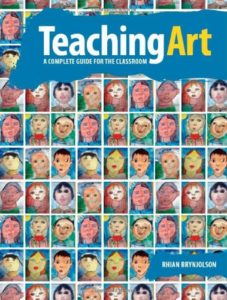
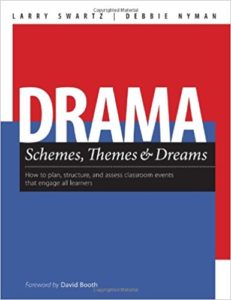
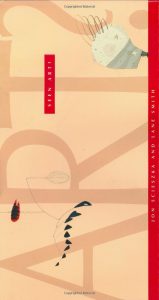

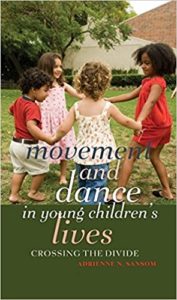
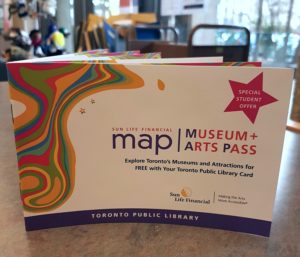
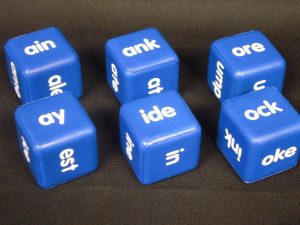
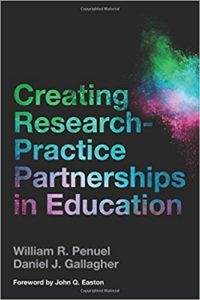 Creating Research-Practice Partnerships in Education is a practical guide that helps to inform both researchers and education professionals on how to form long-term collaborations with one another. The authors draw their ideas directly from their own academic and professional experiences in research partnerships. Penuel and Gallagher have been collaborating through research-practice partnerships (RPPs) for more than a decade, and their expertise is articulated into nine chapters that addresses both broad principles and detailed insights into RPPs. The book begins by introducing readers to the realm of RPPs and the importance of such partnerships for developing strategies in the field of education research. The remainder of the book explore various tools and practices in seeking out, establishing, designing, and sustaining RPPs. Using a combination of scholastic resources and knowledge accumulated through years of practical experience, Penuel and Gallagher have created a highly detailed, yet user-friendly guide on collaborative partnerships in Education.
Creating Research-Practice Partnerships in Education is a practical guide that helps to inform both researchers and education professionals on how to form long-term collaborations with one another. The authors draw their ideas directly from their own academic and professional experiences in research partnerships. Penuel and Gallagher have been collaborating through research-practice partnerships (RPPs) for more than a decade, and their expertise is articulated into nine chapters that addresses both broad principles and detailed insights into RPPs. The book begins by introducing readers to the realm of RPPs and the importance of such partnerships for developing strategies in the field of education research. The remainder of the book explore various tools and practices in seeking out, establishing, designing, and sustaining RPPs. Using a combination of scholastic resources and knowledge accumulated through years of practical experience, Penuel and Gallagher have created a highly detailed, yet user-friendly guide on collaborative partnerships in Education.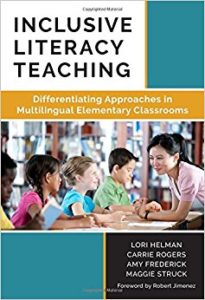 Inclusive Literacy Teaching: Differentiating Approaches in Multilingual Elementary Classrooms combines the study of linguistics and education into a comprehensive guide for teachers. The goal of the book is to provide current and future teachers with key principles and ideas of literacy development for linguistically diverse students. Dr. Lori Helman, an associate professor at the University of Minnesota’s Department of Curriculum and Instruction, presents compelling insights into teaching and education within multilingual environments. The book is divided into seven chapters. The first chapter provides an overview, or “big picture” of linguistics and learning edcation, followed by six detailed chapters that addresses various topics on teaching and learning within a diverse linguistic setting. The ideas articulated in the book draws from an in-depth study of six multilingual students from the first grade through to the sixth grade. The obstacles, successes, and journeys of these students are used to inform the principles presented by the author.
Inclusive Literacy Teaching: Differentiating Approaches in Multilingual Elementary Classrooms combines the study of linguistics and education into a comprehensive guide for teachers. The goal of the book is to provide current and future teachers with key principles and ideas of literacy development for linguistically diverse students. Dr. Lori Helman, an associate professor at the University of Minnesota’s Department of Curriculum and Instruction, presents compelling insights into teaching and education within multilingual environments. The book is divided into seven chapters. The first chapter provides an overview, or “big picture” of linguistics and learning edcation, followed by six detailed chapters that addresses various topics on teaching and learning within a diverse linguistic setting. The ideas articulated in the book draws from an in-depth study of six multilingual students from the first grade through to the sixth grade. The obstacles, successes, and journeys of these students are used to inform the principles presented by the author.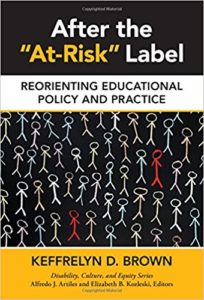 Dr. Keffrelyn D. Brown’s After the “At-Risk” Label: Reorienting Educational Policy and Practice examines the problematic implications and consequences of risk labelling. Dr. Brown explores how teachers and educational leaders see risk in relations to student academic achievement, and argues that sociocultural knowledge regarding risk directly informs educational practices and policies. The unspoken, yet embedded knowledge of risk carries various types of stigma and connotations, and can have a profound influence on how educators approach “at-risk” students. The book is divided into six chapters, each addressing a specific topic on the stigmas of risk within an educational environment. The first three chapters introduces the problematic category of “at-risk” and the historical and political implication of such labels. The following three chapters examines the consequences of “at-risk” labelling through various case studies. The goal of the book is to inform teachers and educational leaders to critically approach and examine the idea of “at-risk” students and dismantle the stigmas surrounding it.
Dr. Keffrelyn D. Brown’s After the “At-Risk” Label: Reorienting Educational Policy and Practice examines the problematic implications and consequences of risk labelling. Dr. Brown explores how teachers and educational leaders see risk in relations to student academic achievement, and argues that sociocultural knowledge regarding risk directly informs educational practices and policies. The unspoken, yet embedded knowledge of risk carries various types of stigma and connotations, and can have a profound influence on how educators approach “at-risk” students. The book is divided into six chapters, each addressing a specific topic on the stigmas of risk within an educational environment. The first three chapters introduces the problematic category of “at-risk” and the historical and political implication of such labels. The following three chapters examines the consequences of “at-risk” labelling through various case studies. The goal of the book is to inform teachers and educational leaders to critically approach and examine the idea of “at-risk” students and dismantle the stigmas surrounding it.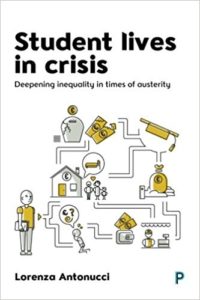 Since the 90s, Europe’s higher education (HE) policies across have encouraged families to send their children to universities as a form of investment. According to Antonucci, the governments’ push towards higher education in the past two decades has been directly responsible for the growth of inequality among Europe’s youths. Her findings show the increasingly high number of youths attending universities have created an oversaturation of overqualified graduates, leading to high rates of unemployment among young professionals. Antonucci argues that policies encouraging higher education are now putting youths into financial crisis due to amounting debt during schooling, which is exacerbated by the lack of employment after graduation. The book presents a series of case studies that looks at students from six different European cities, and explore how higher education have impacted their lives and living conditions. The ideas presented in the book do not seek to criticize higher education, but rather push for revisions of higher education policies in Europe that would better suit the current sociopolitical landscape.
Since the 90s, Europe’s higher education (HE) policies across have encouraged families to send their children to universities as a form of investment. According to Antonucci, the governments’ push towards higher education in the past two decades has been directly responsible for the growth of inequality among Europe’s youths. Her findings show the increasingly high number of youths attending universities have created an oversaturation of overqualified graduates, leading to high rates of unemployment among young professionals. Antonucci argues that policies encouraging higher education are now putting youths into financial crisis due to amounting debt during schooling, which is exacerbated by the lack of employment after graduation. The book presents a series of case studies that looks at students from six different European cities, and explore how higher education have impacted their lives and living conditions. The ideas presented in the book do not seek to criticize higher education, but rather push for revisions of higher education policies in Europe that would better suit the current sociopolitical landscape.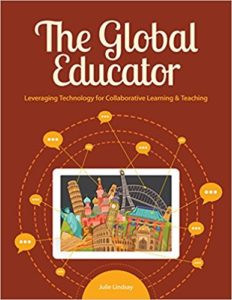 In The global educator: Leveraging technology for collaborative learning and teaching, Julie Lindsay, a global collaboration consultant and “teacherpreneur”, re-imagines teaching and learning within the context of technological growth and global connectivity. The digital age has led to the creation of educational platforms that do not fit the mold of traditional classrooms. Lindsay sees this shift as an opportunity for teachers and educators to foster a new kind of learning that focuses on intercultural understanding and collaboration. She presents the idea of the ‘global educator’ who is not only technologically capable, but is also able to use culturally diverse learning resources and promote connectivity between students. The goal of the book is to inform the development of curriculum that would better promote global learning and collaboration. Separated into four parts, the book examines the importance of global educators in the digital age through the use of case studies, narratives, and the author’s own experiences in global education.
In The global educator: Leveraging technology for collaborative learning and teaching, Julie Lindsay, a global collaboration consultant and “teacherpreneur”, re-imagines teaching and learning within the context of technological growth and global connectivity. The digital age has led to the creation of educational platforms that do not fit the mold of traditional classrooms. Lindsay sees this shift as an opportunity for teachers and educators to foster a new kind of learning that focuses on intercultural understanding and collaboration. She presents the idea of the ‘global educator’ who is not only technologically capable, but is also able to use culturally diverse learning resources and promote connectivity between students. The goal of the book is to inform the development of curriculum that would better promote global learning and collaboration. Separated into four parts, the book examines the importance of global educators in the digital age through the use of case studies, narratives, and the author’s own experiences in global education.